Discover the comprehensive guide to jersey fabrics, covering types, uses, and benefits. Learn everything you need to know about this versatile and comfortable textile, from single and double jersey to interlock and stretch variants cotton jerseys. Perfect for fashion, casual wear, and activewear, our guide weaving jersey fabric helps you choose the right types of jersey fabric for your needs.
What is Jersey Fabric?
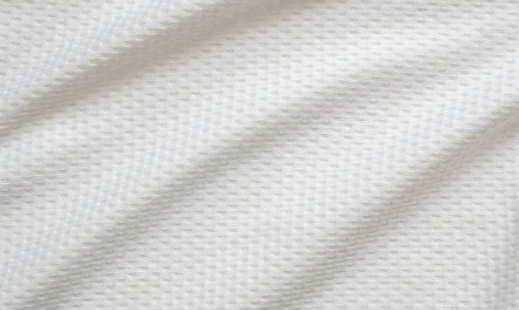
Jersey fabric is a type of knit textile known for its stretch, softness, and versatility. Originally made from wool, modern jersey fabrics are often crafted from cotton, synthetic fibers, or blends of different materials. The key characteristics of different types of jersey knitted fabric include:
- Stretch: Jersey fabric has natural elasticity due to its knitted structure, which allows it to stretch and return to its original shape. This makes it comfortable to wear and suitable for various body shapes and movements.
- Softness: The fabric is soft to the touch, enhancing the comfort of garments made from it. This softness is a result of the knit technique and the fibers used.
- Versatility: Jersey fabric can be used in a wide range of applications, from casual wear and activewear to home textiles. It is popular for making t-shirts, dresses, leggings, underwear, and bedding.
- Ease of Care: Jersey fabric is generally easy to care for, often being machine washable and resistant to wrinkles.
- Breathability: Depending on the fiber content, jersey fabric can be highly breathable, making it ideal for clothing worn close to the skin.
Jersey fabric can be found in several types, including single, single knit jersey, plain knit double jersey, interlock jersey, and stretch jersey, each with unique attributes suitable for different uses in everyday garments. Its combination of comfort, durability, and ease of care makes it a favorite in both fashion and everyday wear.
Different types of Jersey Fabric
Brushed Jersey Fabric
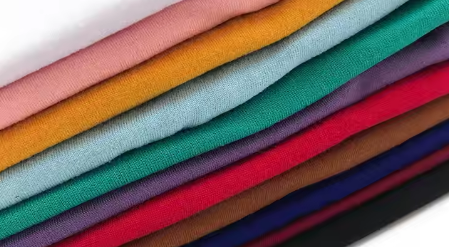
Brushed jersey fabric is a variant of traditional, jersey fabric made of knit that undergoes a brushing process to enhance its softness and warmth. This fabric is often brushed on one or both sides, resulting in a plush, cozy texture that feels luxurious against the skin. Commonly used in loungewear, pajamas, and casual apparel, brushed cotton jersey fabric is versatile fabric that offers both comfort and style for cooler weather.
Stretch Jersey Fabric

Stretch jersey synthetic fabric, is a versatile textile renowned for its exceptional elasticity and comfort. Featuring a blend of spandex or elastane with other natural fibers together, it offers superior stretch and recovery properties, making it perfect for form-fitting garments like leggings, activewear, and fitted tops. Its smooth texture and breathable nature contribute to a comfortable wearing experience, making stretch jersey fabric a preferred choice for both fashion and performance apparel.
Cotton Jersey Fabric
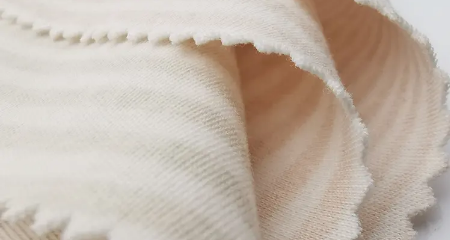
Cotton jersey fabric is a soft and breathable knit textile made from cotton fibers. It offers excellent comfort and drapes beautifully, making it ideal for creating comfortable and stylish garments such athletic shirts such as t-shirts, dresses, and loungewear. With its natural elasticity and moisture-wicking properties, cotton jersey material is a popular choice for casual wear, activewear, and even baby clothing due to its gentle touch against the skin.
Single jersey
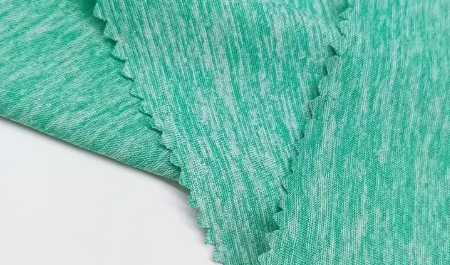
Single jersey fabric is a lightweight knit textile characterized by its softness and stretchiness. With a smooth face on stretchy fabric fabric on one side and characteristic loops on the other, it’s commonly used for making t-shirts tank tops, dresses, and casual tops due to its comfortable feel and draping properties. Its versatility and ease of handling make it a favorite choice for both sewing enthusiasts and fashion designers alike.
Interlock jersey
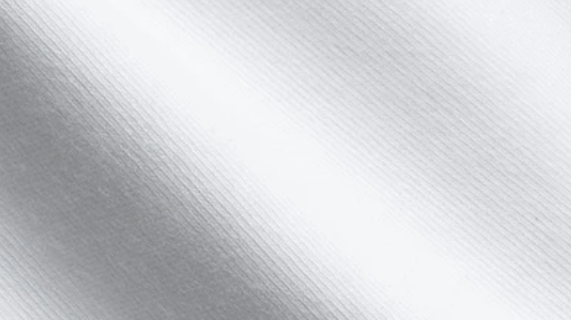
Interlock jersey is a type of double-knit fabric known for its smooth and stable characteristics. Unlike single jersey, interlock jersey is created by knitting a sewing machine, with two sets of needles and requires two yarns simultaneously, resulting in a fabric with no visible right or wrong side. This type of double knit jersey is soft, firm, and offers excellent stretch, making it ideal for high-quality sportswear, baby clothing, and fitted garments.
Slub jersey
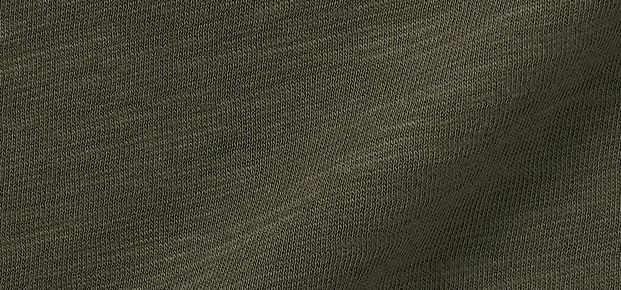
Slub bamboo jersey fabric is a type of jersey fabric characterized by irregularities in the yarn, resulting in a more textured pattern and slightly uneven surface. These irregularities create a unique, casual look, making slub jersey popular for crafting relaxed and stylish jersey garments. It is often used for casual tops, t-shirts, and summer dresses, adding visual interest and a laid-back vibe to the finished pieces.
Polyester Jersey Fabric
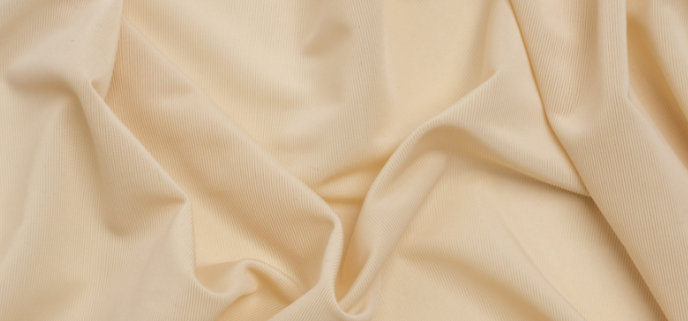
Polyester jersey fabric is a versatile textile known for its durability, stretch fabric wrinkle resistance, and moisture-wicking properties. Composed of polyester fibers, it offers excellent stretch and recovery, making it soft jersey fabric ideal for sportswear, activewear, and clothing that requires flexibility and comfort. Its smooth texture and ability to hold vibrant colors well also make it a popular choice for fashion garments and athleisure wear.
Sewing Jersey Knit Fabric
Sewing jersey knits can be straightforward with the right techniques resulting fabric, and tools. Start by pre-washing your jersey needle fabric to prevent shrinkage, as jersey knit often shrinks. Use a ballpoint or stretch needle to avoid damaging the fabric, and opt for polyester thread, which accommodates the jersey knit fabric’s stretch better than cotton thread.
Here are some key tips on how to sew jersey knits for quick reference:
- Pre-wash the fabric: Prevent shrinkage by washing and drying before cutting.
- Use appropriate needles and thread: Ballpoint/stretch needles and polyester thread work best.
- Set up your sewing machine: Use stretch or narrow zigzag stitches and adjust tension.
- Cut and pin fabric carefully: Ensure clean cuts and pin perpendicular to seams.
- Sew with care: Keep fabric relaxed, use a walking foot if available, and finish raw edges properly.
- Hem with a twin needle: Create a stretchy, professional-looking hem.
By following these guidelines straight stitch on, you can sew jersey fabric with confidence, resulting in comfortable and stylish jersey knit fabric garments too.
Pros and cons of jersey fabric
Despite these drawbacks, jersey fabric remains a popular choice for its comfort, versatility, and ease of wear. Understanding its characteristics can help in selecting the right type woven fabric jersey knit fabric and style of jersey fabric for specific needs and applications.
Pros of Jersey Fabric:
- Comfort: Jersey fabric is soft, lightweight, and has a smooth texture, making it incredibly comfortable to wear.
- Stretch: It offers excellent stretch and recovery, providing freedom of movement and a flattering fit.
- Versatility: Jersey fabric is suitable for various applications, from casual wear to sportswear and home textiles.
- Breathability: Depending on the fiber content, jersey fabric can be highly breathable, making it ideal for clothing worn close to the skin.
- Easy Care: It is generally easy to care for, often being machine washable and resistant to wrinkles.
- Drapability: Jersey fabric drapes well, enhancing the silhouette of garments and ensuring a flattering look.
Cons of Jersey Fabric:
- Prone to Pilling: Some jersey fabrics, especially those with a high percentage of synthetic fibers, may be prone to pilling over time.
- Lacks Structure: Jersey fabric tends to be lightweight and may lack the structure required for certain garment styles.
- Edges Curling: Raw edges of jersey fabric have a tendency to curl, which can make sewing and finishing seams more challenging.
- Durability Concerns: Depending on the quality of the fabric, jersey may not be as durable as other woven fabrics, particularly for high-impact activities.
- Static Build-Up: Synthetic jersey fabrics, such as polyester blends, may generate static electricity, leading to discomfort or clinginess in clothing.
- Transparency: Some lightweight jersey fabrics can be slightly sheer, requiring additional layers or lining for modesty.
Applications of Jersey Fabrics
Jersey fabrics are renowned for their versatility and comfort, making them suitable for a wide range of applications in fashion, sportswear jersey clothing, and home textiles. Here are some key applications of jersey fabrics:
Fashion and Everyday Wear
- T-Shirts: Single jersey is commonly used for making t-shirts due to its lightweight, breathable, and comfortable properties.
- Dresses: Both single and double jersey fabrics are popular for dresses, providing a flattering drape and stretch.
- Leggings and Pants: Stretch jersey, which contains elastane or spandex, is ideal for leggings and fitted pants because of its excellent elasticity and recovery.
- Skirts: Jersey fabrics, particularly double jersey, are often used for making skirts that offer comfort and a nice drape.
- Tops and Blouses: Lightweight jerseys are perfect for casual tops and blouses that require a soft and comfortable feel.
Sportswear and Activewear
- Yoga Pants and Gym Wear: Stretch jersey fabrics are perfect for activewear, providing the necessary flexibility and comfort for physical activities.
- Sports Bras and Athletic Tops: The elasticity and moisture-wicking properties of certain jersey fabrics make them suitable for sports bras and athletic tops.
Loungewear and Sleepwear
- Pajamas: Soft and breathable jersey fabrics are ideal for pajamas and sleepwear, offering comfort for a good night’s sleep.
- Robes and Lounge Sets: Jersey is often used for making robes and loungewear that feel cozy and comfortable.
Children’s Clothing
- Baby Clothes: Interlock and single jersey fabrics are soft against the skin, making them perfect for baby onesies, rompers, and other children’s clothing.
- Toddler Outfits: The stretch and softness of jersey fabrics provide the comfort needed for active toddlers.
Home Textiles
- Bed Sheets and Pillowcases: Jersey knit sheets are popular for their softness and stretch, providing a comfortable and snug fit on mattresses and pillows.
- Throw Blankets: The softness and warmth of heavier jersey fabrics make them suitable for cozy throw blankets.
Maternity Wear
- Maternity Tops and Dresses: The stretch and comfort of jersey fabrics make them ideal for maternity wear, accommodating a growing belly while maintaining style and comfort.
Accessories
- Headbands and Beanies: Jersey fabrics are often used for stretchy and comfortable headbands and beanies.
- Scarves: Lightweight and soft jersey is perfect for making scarves that are gentle on the skin.
Custom and Decorative Items
- Fabric Art and Crafts: Jersey fabric’s versatility allows for its use in various DIY projects, including fabric art and craft items.
Conclusion
In conclusion, the Ultimate Guide to Jersey Fabrics provides a comprehensive overview of this versatile textile, covering its properties, types, applications, and considerations. From its comfort and stretch to its various uses in fashion, sportswear, and home textiles, cotton jersey fabric proves to be a staple in many industries. While it offers numerous benefits such as comfort, versatility, and ease of care, it also comes with considerations like pilling, lack of structure, and potential transparency. By understanding these aspects, individuals can confidently navigate the world of jersey fabrics, selecting the most suitable options for their needs and preferences. Whether for creating stylish clothing, comfortable loungewear, or practical sportswear, jersey cotton fabric always remains a go-to choice for its unbeatable combination of comfort, flexibility, and style.
